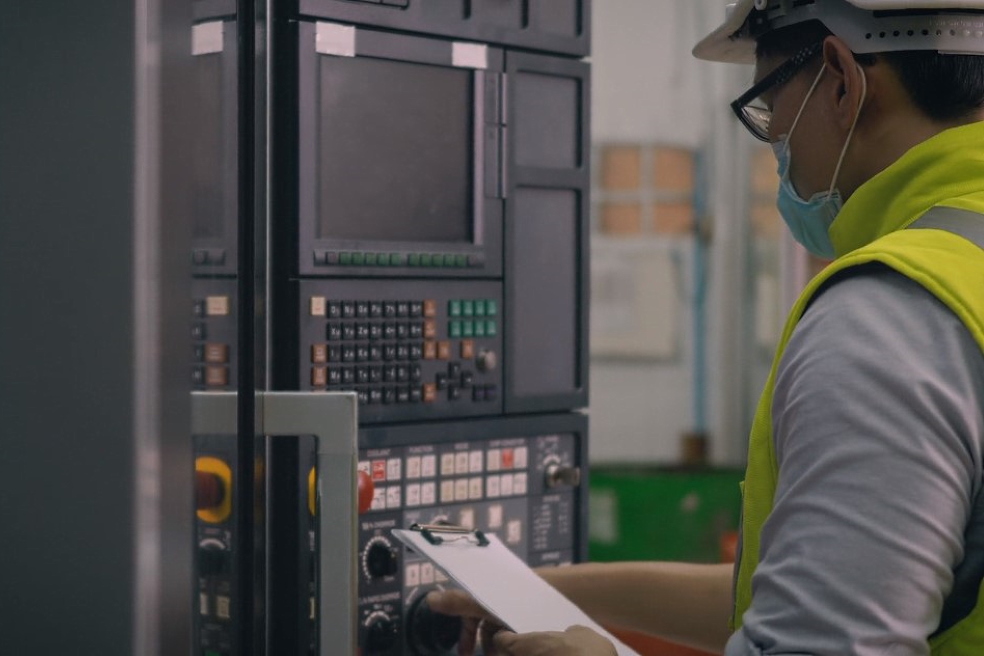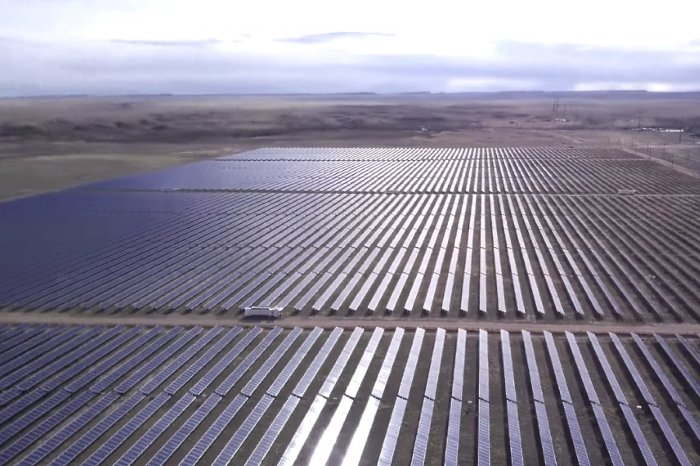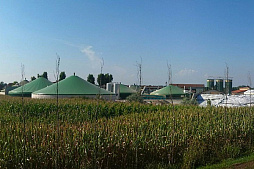After receiving the necessary documents (application form and project presentation), our team will try to review your request as soon as possible, and leading experts will offer the best options for project funding.
The development of any sector of the economy that consumes electrical energy, be it heavy industry or mining, requires additional investment in the construction of electrical substations and other elements of the power system.
Global investment in the energy sector in 2020 decreased by about $ 400 billion compared to 2019, amounting to just over $ 1,500 billion.
Growing competition requires businesses to implement more efficient solutions in various areas, including generation, transformation and transmission of energy.
In recent years, companies in the power sector around the world have been challenged to implement new technological developments at their facilities to improve customer power services while striving for better quality and price conditions. The cost of electrical substations is also rising, given the stringent requirements for energy quality, safety and facility automation.
ESFC Investment Group experts and financial specialists perform a full range of works on the design and calculation of technical and economic parameters of electrical systems and networks, including the development of individual energy projects for power plants, industrial facilities, transport hubs, and so on.
We offer financing for the construction of electrical substations in Europe, the USA, Latin America, North Africa, the Middle East, as well as in the countries of South and East Asia.
The offerings of our finance company include the organization of project finance (PF), long-term investment loans and much more.
Determination of the cost of an electrical substation
Engineering design and financial calculations of electrical systems are based on a detailed analysis and feasibility study of the initial parameters and data collected at the pre-investment research stage.The chosen option for the implementation of the electrical substation project should ensure the supply of energy to consumers with the lowest investment costs while maintaining optimal quality, reliability and flexibility of the facility.
Multi-stage work to determine the cost of an electrical substation includes the search for structures, equipment, materials and methods for their connection, which ensure the achievement of the planned economic indicators of the project with the obligatory compliance with the technical standards of the host country. These works should be an important part of all projects for the construction, modernization, expansion or reconstruction of electrical systems of any scale.
After the approval of a specific list of equipment, materials and technical solutions, our technicians begin stage-by-stage work on the development of technical documentation.
At the same time, the ESFC legal team is working to obtain the necessary approvals from local authorities, licensing authorities, representatives of electricity supplier companies, etc.
The electrical substation planning stage usually includes, but is not limited to:
• Analysis of the existing power system of the region including determination of its load, regulation conditions, as well as the potential for further development.
• Assessment of the requirements of key consumers to ensure optimal operating conditions for the equipment and substantiation of the parameters of the future power substation.
• Analysis of the parameters of the connected power plants and the selection of suitable operating modes for each facility to ensure their balance and dynamic stability.
• Performing professional calculations of power grid operating modes in order to develop an optimal scheme of electrical equipment including transformers, automation, protection systems, compensating devices and other units.
• Estimation of the required costs, including the purchase of materials and equipment, site preparation and the cost of professional services, including the services of construction contractors, independent consultants, etc.
• Preparation of a detailed report with technical and economic indicators of the future system, stages of construction, funding requirements.
The engineering design of electrical substations in general covers an extremely wide range of practical issues.
Along with a systematic approach, which should be aimed at solving strategic business problems, the engineering team is faced with numerous narrow technical problems, such as the most rational choice of protection and automation devices.
There are many techniques used to estimate project costs in the early stages of development. These methods, widely used in areas such as electrical engineering, include Phased Estimating, Multi-Element Estimating, Factoring Estimating, and Parametric Estimating, among others.
In general, the cost of electrical substations today can reach several tens of millions of euros, which depends on the type of facility, capacity, location, the degree of technical complexity of the project and a number of other factors.
The financing schedule for the electrical substation and the amount of funds received at each stage of construction should be drawn up individually, taking into account the conditions of a specific project and the requirements of stakeholders.
Factors affecting the cost of an electrical substation
When starting the engineering design of an electrical substation, it is necessary to clearly define its place in the power system, to determine the function that it should perform today and tomorrow.When determining the parameters of a substation under construction, it is important to clarify the investment efficiency indicators. Investment decisions are made on the basis of analytical information obtained from various sources.
The cost-benefit principle states that value is created when the benefit of a solution exceeds its cost.

The financial cost of the construction of an electrical substation is formed under the influence of the following three variables:
• Cash flow of the investment project.
• Time of project implementation from idea to commissioning.
• Risks and uncertainties associated with the project.
Any financial decisions made by project initiators and investors are closely related to the value of money over time.
The money received the next year is worth more than the same amount when it was received in the fifth or tenth year of construction. Most financial decisions made at the large business level must take into account the change in the value of money over time.
The most important factors affecting the cost of a substation are the type of facility and its location in the system.
Finding the optimal solution is often difficult and requires deep economic and technical analysis.
When choosing a specific technical solution for a substation, several factors are taken into account, such as the location of the substation and the length of the associated low voltage circuits, the type and layout of the site, the characteristics of medium and low voltage networks for connection.
Both investment and operating costs are taken into account when preparing an engineering project. The costs of construction of a substation, power lines and installations constitute the main costs incurred from the moment of making a decision on construction until the moment of putting this substation into operation. Operating costs mainly include the cost of purchasing electricity, maintenance, repairs and energy losses. The exact proportions of these costs differ for each project.
It is worth analyzing these costs not only at the construction stage, but also in the context of the long-term operation of the facility.
The substation should be designed in such a way as to ensure the appropriate quality of electricity supplied to consumers at the lowest possible cost. The power quality is determined, among other things, by the level of voltage harmonics, frequency, symmetry of the supply voltages. The substation must be flexible, that is, it must easily adapt to connecting new loads or increasing existing loads. It should also be simple and safe to use.
Factors affecting the cost of an electrical substation are listed below:
• The location of the substation and the length of the MV and LV circuits connected to it, which should be as short as possible.
• The type and design features of the facility that directly affect the use of space and the requirements for the site and premises.
• The power of the step-down transformer in relation to the existing or anticipated future electrical load.
• Investor requirements and operating conditions governing the selection of electrical equipment and ancillary installations.
The investment costs of a substation and transmission line spent during the construction and installation period represent any costs incurred from the moment the decision was made to build a given facility until its normal operation.
Investment costs include the following:
• Material costs (transformer equipment, protection systems, line conductors, supports, cables, fittings and other elements and materials).
• Costs related to construction (operation of equipment used in the construction of the substation, planning of works and hiring of personnel).
• Design and administrative costs (eg development of project documentation, obtaining official building permits).
Operating costs include the following:
• Costs for the purchase of electricity, as well as associated costs to cover energy losses (the latter depend on the resistivity of cables, expected power and consumer demand for electricity).
• Costs associated with the maintenance, repair and maintenance of an existing electrical substation and its equipment.
• The cost of a system failure (in other words, the cost of undelivered energy). The cost of energy not delivered as a result of equipment failures is determined based on the failure rate, taking into account the average number of failures per year and the average duration of failures.
Based on the experience of numerous implemented industrial and energy projects, our professional team can compare alternative options for the construction of electrical substations, choosing the optimal solution for the customer.
The financing of electrical substations requires in-depth knowledge and experience due to the numerous technical and economic factors affecting a project.
For example, the location of the substation close to energy consumers allows to reduce the cross-section of wires due to less voltage drop at a distance. This, on the one hand, reduces investment costs, however, reducing the cross-section of the wires in this case increases the operating energy losses.
When placing transformer equipment inside the premises where energy consumers are located, there is no need for the construction of an overhead power transmission line.
The disadvantage of this option is the need to allocate the appropriate equipped space, which may be associated with additional investment.
When choosing the design of the future electrical substation, our engineering team must find a balanced approach to parameters such as efficiency, loss rate, safety, access and ease of use, compact design, equipment size and weight, initial investment and maintenance costs. The final decision always rests with the investor.
Economic efficiency of electrical substation project
Evaluating the economic efficiency of an electrical substation project is an important part of a feasibility study. This includes a number of economic indicators analyzed at the planning stage according to standard methods.In general terms, the economic effect (Eff) of an investment project is defined as follows:
Eff = R – C
R is the economic result (income) from the substation for the entire period of its operation.C is the sum of one-time and recurring (annual) costs incurred by the project participants from the start of construction to the time of closure of the facility.
An important role in the calculations is played by the so-called integral indicators of the efficiency of an investment project, which take into account the final income and expenses for a certain estimated period of construction and operation of an electrical substation.

The project cost indicators include the indicators listed below.
Capital investments are initially determined on the basis of payment documents at prices in effect at the time of the transaction. These indicators are usually calculated separately for the substation and power lines.
Kst = ∑ (Кtr + Кae + Кst + Кtl)
Кtr is the cost of substation transformers.Кae is the estimated cost of ancillary equipment.
Кst is a fixed part of the cost of building a substation.
Кtl - the cost of building a power transmission line.
When making these calculations, the number of power lines in the electrical system is taken into account, as well as the number of substations in large projects. In conditions of economic instability, high inflation and significant price fluctuations, it is important to pay attention to the coefficients that allow these fluctuations to be taken into account in the calculations.
Operating costs, that is, the cost of operating and maintaining the electrical system (including the substation and transmission lines), is calculated using the following formula:
OM = Atl*Ktl + Ast*Kst
Atl - standard norms of expenses for maintenance and repair of power lines.Ast - standard norms for the cost of maintenance and repair of the substation.
Ktl is the estimated cost of power lines.
Kst is the cost of substation.
We should also take into account depreciation deductions, which are intended for the modernization and replacement of worn out electrical components of the substation and power transmission lines during the long-term operation of the facility.
An important role in calculating the economic efficiency of an electrical substation project is played by such parameters as the cost of electrical energy at the input (taking into account its losses when passing through the substation), the cost of connecting to the power grid, and so on.
The calculations use indicators such as balance sheet profit, net cash flow (including depreciation charges), income tax, as well as value added tax and other types of fixed and variable expenses.
Evaluation of the overall efficiency of an investment project in a simplified form is based on indicators of return on investment and payback periods.
At the same time, the return on investment is a part of the capital investment that is returned to the company every year in the form of profit from the supply of electricity:
Ri = (Ist + Ast) / (К — L)
Ri is the Return on Investment.Ist is the project's annual net profit.
Ast is depreciation charge for equipment renovation.
L is the residual value of the dismantled equipment.
K is the capital investment within a year.
When making calculations for large capital-intensive projects carried out over several years, financiers take into account discounting formulas that translate future flows into current values.
Need more information?
Are you looking for professional assistance in the implementation of your investment project?
Contact ESFC Investment Group for details.
Contact us for more information.






















